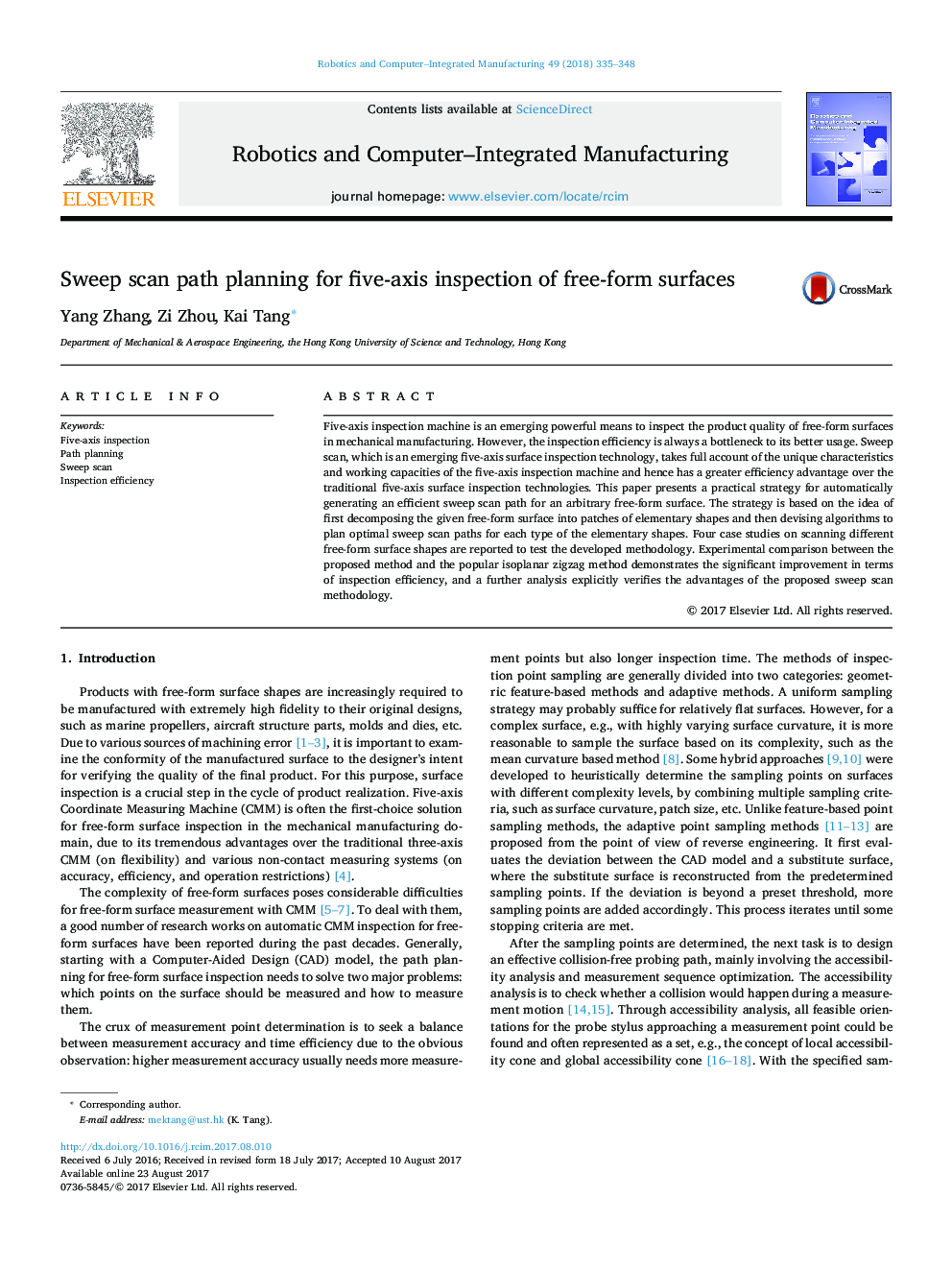| Article ID | Journal | Published Year | Pages | File Type |
|---|---|---|---|---|
| 4948956 | Robotics and Computer-Integrated Manufacturing | 2018 | 14 Pages |
â¢An automatic path generation method is proposed for five-axis sweep scan inspection of an arbitrary free-form surface.â¢The path generation algorithms are composed of two parts, i.e., partition the complex free-form surface into patches with simple elementary shapes and devise algorithms to plan optimal sweep scan paths for each type of the elementary shapes.â¢Compared to the traditional inspection methods, the generated sweep scan paths take full account of the unique characteristics and working capacities of the five-axis inspection machine and hence significantly improve the inspection efficiency.
Five-axis inspection machine is an emerging powerful means to inspect the product quality of free-form surfaces in mechanical manufacturing. However, the inspection efficiency is always a bottleneck to its better usage. Sweep scan, which is an emerging five-axis surface inspection technology, takes full account of the unique characteristics and working capacities of the five-axis inspection machine and hence has a greater efficiency advantage over the traditional five-axis surface inspection technologies. This paper presents a practical strategy for automatically generating an efficient sweep scan path for an arbitrary free-form surface. The strategy is based on the idea of first decomposing the given free-form surface into patches of elementary shapes and then devising algorithms to plan optimal sweep scan paths for each type of the elementary shapes. Four case studies on scanning different free-form surface shapes are reported to test the developed methodology. Experimental comparison between the proposed method and the popular isoplanar zigzag method demonstrates the significant improvement in terms of inspection efficiency, and a further analysis explicitly verifies the advantages of the proposed sweep scan methodology.
